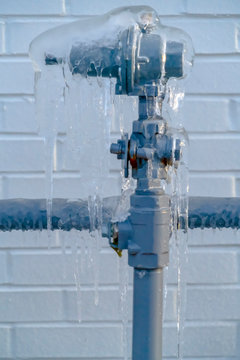Protecting Your Pipes from Cold Weather: Top Tips
Protecting Your Pipes from Cold Weather: Top Tips
Blog Article
They are making a few good points on Prevent Frozen Pipes overall in the content down the page.

Cold weather can wreak havoc on your plumbing, specifically by freezing pipes. Right here's just how to stop it from occurring and what to do if it does.
Intro
As temperatures drop, the threat of frozen pipelines rises, possibly leading to expensive repairs and water damages. Understanding how to avoid frozen pipelines is essential for property owners in cold environments.
Prevention Tips
Shielding at risk pipelines
Wrap pipelines in insulation sleeves or make use of heat tape to secure them from freezing temperature levels. Concentrate on pipes in unheated or external locations of the home.
Home heating strategies
Keep indoor spaces effectively heated up, specifically locations with pipes. Open cabinet doors to permit warm air to flow around pipes under sinks.
Exactly how to identify icy pipelines
Seek decreased water circulation from taps, uncommon smells or sounds from pipelines, and noticeable frost on subjected pipes.
Long-Term Solutions
Structural modifications
Consider rerouting pipelines away from outside wall surfaces or unheated areas. Include added insulation to attic rooms, basements, and crawl spaces.
Updating insulation
Buy top quality insulation for pipes, attics, and wall surfaces. Appropriate insulation helps preserve constant temperatures and decreases the danger of icy pipes.
Protecting Exterior Pipes
Yard tubes and outdoor faucets
Disconnect and drain pipes yard hoses before winter. Set up frost-proof faucets or cover outside taps with shielded caps.
Comprehending Icy Pipes
What causes pipelines to ice up?
Pipelines freeze when revealed to temperatures below 32 ° F (0 ° C) for prolonged durations. As water inside the pipelines ices up, it increases, putting pressure on the pipe walls and potentially triggering them to burst.
Threats and problems
Frozen pipes can cause water interruptions, residential property damage, and pricey repairs. Ruptured pipes can flooding homes and trigger considerable structural damage.
Signs of Frozen Water Lines
Determining frozen pipes early can prevent them from bursting.
What to Do If Your Pipes Freeze
Immediate actions to take
If you think icy pipelines, keep taps open up to relieve pressure as the ice thaws. Use a hairdryer or towels soaked in hot water to thaw pipes slowly.
Final thought
Stopping icy pipes calls for aggressive steps and fast responses. By recognizing the reasons, signs, and safety nets, homeowners can protect their pipes throughout winter.
5 Ways to Prevent Frozen Pipes
Drain Outdoor Faucets and Disconnect Hoses
First, close the shut-off valve that controls the flow of water in the pipe to your outdoor faucet. Then, head outside to disconnect and drain your hose and open the outdoor faucet to allow the water to completely drain out of the line. Turn off the faucet when done. Finally, head back to the shut-off valve and drain the remaining water inside the pipe into a bucket or container. Additionally, if you have a home irrigation system, you should consider hiring an expert to clear the system of water each year.
Insulate Pipes
One of the best and most cost-effective methods for preventing frozen water pipes is to wrap your pipes with insulation. This is especially important for areas in your home that aren’t exposed to heat, such as an attic. We suggest using foam sleeves, which can typically be found at your local hardware store.
Keep Heat Running at 65
Your pipes are located inside your walls, and the temperature there is much colder than the rest of the house. To prevent your pipes from freezing, The Insurance Information Institute suggests that you keep your home heated to at least 65 degrees, even when traveling. You may want to invest in smart devices that can keep an eye on the temperature in your home while you’re away.
Leave Water Dripping
Moving water — even a small trickle — can prevent ice from forming inside your pipes. When freezing temps are imminent, start a drip of water from all faucets that serve exposed pipes. Leaving a few faucets running will also help relieve pressure inside the pipes and help prevent a rupture if the water inside freezes.
Open Cupboard Doors
Warm your kitchen and bathroom pipes by opening cupboards and vanities. You should also leave your interior doors ajar to help warm air circulate evenly throughout your home.

I stumbled upon that page about Preventing and dealing with frozen pipes while exploring the search engines. Loved our review? Please quickly share it. Help another person check it out. Thank-you for your time spent reading it.
Free Estimate Report this page